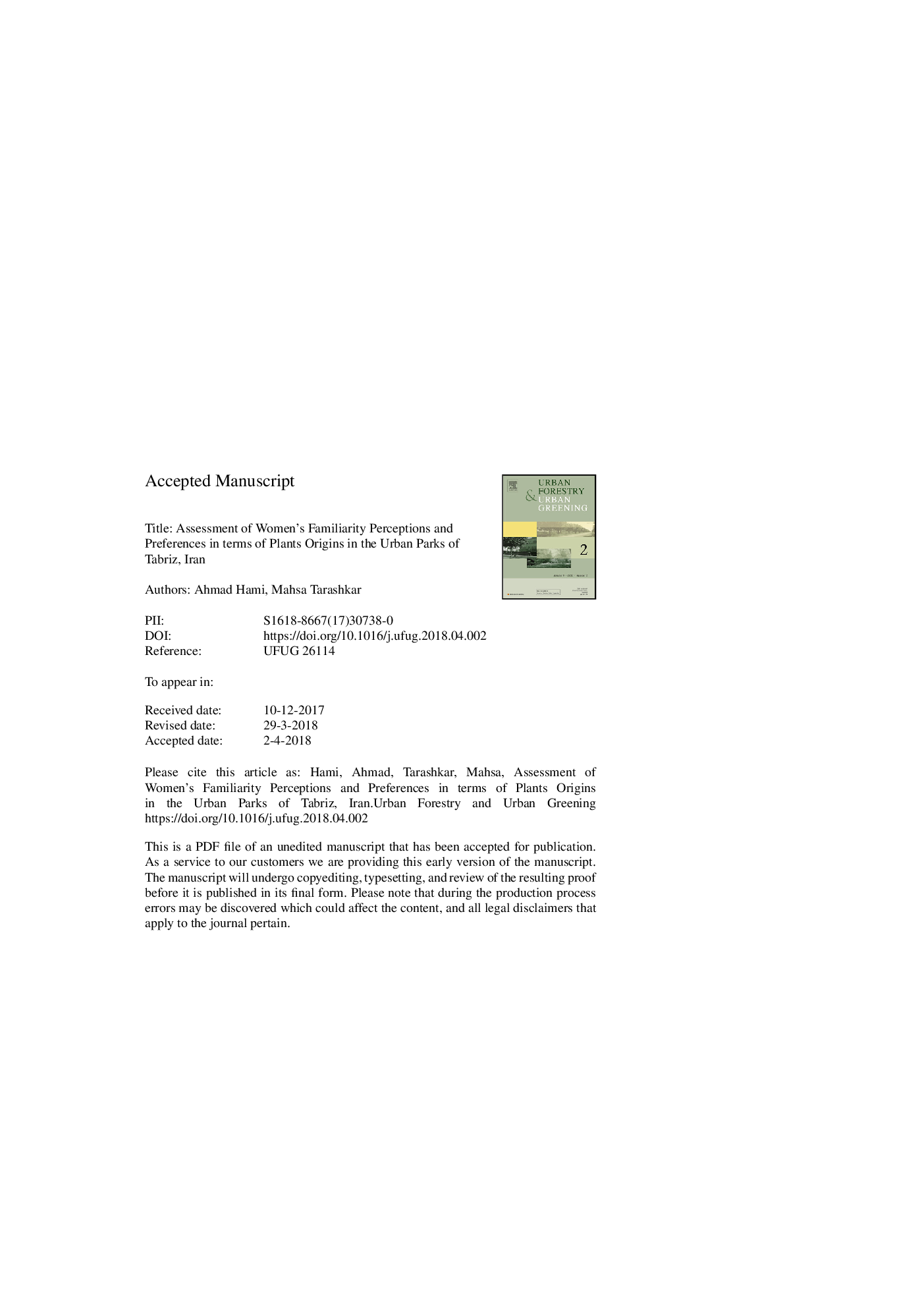| Article ID | Journal | Published Year | Pages | File Type |
|---|---|---|---|---|
| 6549236 | Urban Forestry & Urban Greening | 2018 | 24 Pages |
Abstract
This study evaluates women's views towards and perceptual preferences for plant familiarity in urban parks. A visual questionnaire containing scenes of native, semi-native, and non-native plant species was distributed among 178 female participants. Women are more familiar with native landscapes, including Arasbaran scenes and its native plants such as Platanus occidentalis, and prefer these scenes to others. B-variable correlation result between familiarity and preference revealed native shrubs, native trees, and non-native flowers as the most preferred plants. The results indicate a direct relationship between familiarity and preference, with preferences increasing as familiarity does. In addition, there are significant differences across income levels, education status, and age groups as to familiarity and preference. Married participants had higher familiarity with plant origins such as native plants, compared to single participants. With increases in educational status, the preference and familiarity for the plants go up; when it comes to the less educated populace, such preference and familiarity are at their minimum. What is recommended is to simulate such scenes in Tabriz urban parks and landscapes. Using more native trees and shrubs is suggested in urban park planting and non-native flowers are most preferable than native flowers. In brief, the highest priority should be given to planting native plants in parks. In addition, the combination of native trees and shrubs and non-native flowers is recommended for urban parks of Tabriz, such that the proportion of trees to shrubs in the planting combination is higher, as is the case with the proportion of shrubs to flowers.
Related Topics
Life Sciences
Agricultural and Biological Sciences
Forestry
Authors
Ahmad Hami, Mahsa Tarashkar,
